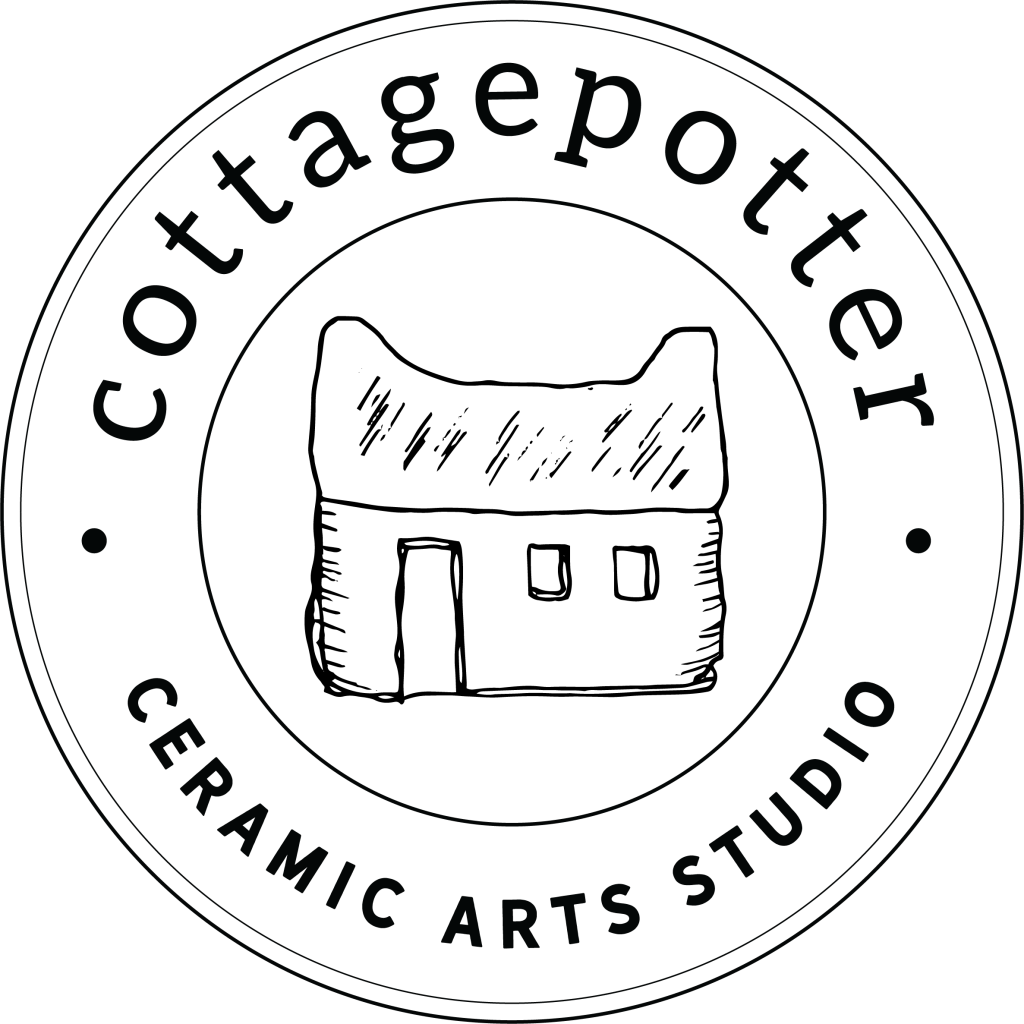
About our founder, Kaitlyn, The Cottage Potter.
“I had a life threatening accident while hiking in November 2013. In the year after I was hiking less and was able to join a local book club when a new one was forming. One of the book clubbers was a potter and talked fondly of her time at the local art league studio. She brought a new member in to book club that she had met at the pottery studio. Two of us others decided to try a wheel throwing class together. It was incredibly humbling as well as frustrating to near tears. I could either quit or find a way to stay with clay. The people and creative camaraderie at the pottery studio were so warm and welcoming that I stayed in the wheel throwing class but moved to slab work. I often gathered pieces of nature when walking in the woods to save and press in to slab plates. I then made a few a folk art style stamped bowls but soon started handcrafting little cottages. I really enjoyed them and anyone who saw them always responded sweetly and favorably. I was going to participate in a charity spin cycling class and offered the cottages as rewards for people that donated. I tagged it #cottagesforcancer. The cottages were the inspiration for my business name — The Cottage Potter. One day at the cycling studio a new large indoor plant was placed in the lobby. Its leaves were uniquely shaped and intrigued me as possible use for pottery. I ended up using them as the original petal template for what I now make as petal bowls.
As a handbuilder, my slab work is subject to different stresses than wheel thrown pottery. In simplest form, it is rolled, hand cut, pieced together and checked often as it dries. It wants to warp, crack or pull apart at the seams. I work hard to keep this from happening. Pieces that have problems are sent to a bucket to be rehydrated, reclaimed and wedged so I can start again. Pieces that are “good” are trimmed, smoothed and set aside to continue drying. This stage is called greenware. They go through a first kiln firing at cone 05 (approx 1,888° F). They are next rinsed, glazed with layers and re-fired at higher temperature known as cone 5 (approx 2,167° F).
Not all work is worthy of being exhibited or sold. I will give seconds in good condition to Empty Bowls to End Hunger events and otherwise use them to test packaging. Picture a mini petal bowl inside a padded envelope being thrown across the room or on the driveway. Does it break? Well — yes, only if I drop a heavy object directly onto it. Oops.
My pieces aren’t perfect. Cottage windows might be a little crooked. The chimneys won’t match each other. Each small house is different from another. I cut out and sculpt the cottage. I make windows and door stamps by hand. I carve textures onto the roof. I paint them with underglaze. The results are charming but maybe a little wonky.
The processes for petal bowls is very different but each one is cut, shaped and formed into a bowl. I press a design into the center — or as best in center as I can at any given time. I tested many glazes and combinations before choosing my favorite four that are currently stocked. Occasionally I do other colors or combinations. They may or may not work but if they pass muster, I will sell them at shows or here on the site.
My newest ceramics are illustrated overglaze decals using a xerox color printer that I converted to use ceramic toners and ceramic developer. Images start off in Adobe Photoshop, get printed onto a thin decal media and then laminated with a cedar oil sheet. I cut them out, soak in water and then apply the resulting image onto a glazed piece. It is then 3rd fired at cone 016.
Any questions? Let me know.
I hope my pottery brings you joy the same as it brings me joy to make it.”
XO // Kaitlyn
Interns are welcome to apply. (In studio / Bloomfield CT – Social media / Remote)
